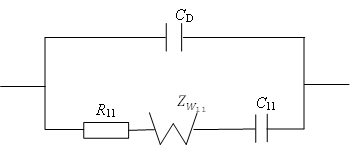Vol 1 No 1 (2019)
Full Issue
Research Article
A study on the deformation and crushing of copper tubing: experiments, theory & FE modelling
A series of 250 mm lengths of copper tubing, of 15 mm outer diameter and 0.7 mm wall thickness, were studied to determine their deformation if they were pinched or crushed between rigid objects applying a given force, to replicate potential accidental damage suffered by the copper pipes during service. A finite element modelling framework was developed to simulate the crushing of a copper pipe the same dimensions as that used for experiments, and the experimental data allowed for a validation of the pipe crushing at approximately room temperature, to consider copper pipe carrying cold water. The FE modelling activity was then extended to consider the deformation of copper pipe at 80∘C, carrying heated water at this temperature. The modelling agreed reasonably well with experiment, and applied forces of 1.5 kN began to deform the cold pipe, with the pipe collapsing on itself at loads of 6 kN. The heated pipe began to deform at roughly 1.25 kN. Lastly, theoretical flow calculations were performed to determine the Reynolds value, the flow velocity and the pressure loss and head loss per unit length of the deformed pipes, according to classical pipe flow calculation methods.
One-step synthesis of TiO₂ nanoparticles using simple chemical technique
Titanium dioxide nanoparticles (TiO2) have been extensively investigated because of its high chemical sustainability, optic properties, and adaptation to the environment. These studies include applications in heterogeneous catalysts, solar cells, coating technology, and electrical devices. TiO2 particles in the nanometer scale can remove limitations, such as the absorbance of organic materials, because of a high surface area to volume ratio. Titanium dioxide nanoparticles, were synthesized using a simple wet chemical method. Their physico-chemical properties were characterized by transmission electron microscopy (TEM), scanning electron microscopy (SEM) and X-ray diffraction (XRD) analyses. The TEM results showed that the mean size of as-synthesized TiO2 was 5 nm with high crystalline anatase phase. The SEM observations revealed that the size of nanoparticles increased with annealing temperature and the morphology of the particles changed to the spherical shape. The crystal structure of the nanoparticles before and after annealing was done by XRD analysis. The rutile phase was formed after heat treatment at 600oC for 3 hours.
Behaviour of the Electrochemical integrator on the basis of Solid Electrolyte is studied in the galvanoharmonic charging mode. The possibility of application of simpler and more graphic calculation technigue and separation of impedance of electrochemical systems into active and reactive components is shown. The plotting of the dependences of the active and reactive impedance components on ac freguency was used to find the values of parameters of the studied equivalent electric cuircuits.
Frumkin-melik-gaykazan model in the potentiodynamic and galvanodynamic regimes of functioning
Aim The main purpose of this article is to study the behavior of a metallic electrode in the electrolyte which contains a surface-active substance with the property of adsorbtion-desorbtion, in the galvanodynamic and potentiodynamic rejimes.
Method The study of the electrochemical behavior of a metallic electrode is carried out by operational impedance method, based on the Ohm’s low on the interaction between the Laplace-transformed expression of current, voltage and complex resistance (impedance) .
Results It is obtained the analytical expression of interface voltage –time dependence in a solution which contains a surface-active indifferent substance with the property of adsorbtion-desorbtion; also it is obtained the analytical expression of current density-time dependence which is passing through electrochemical cell in potentiodynamic regime of functioning of the Frumkin-Melik-Gaykazan model.
Conclusion It is established that the relation between the interface metallic electrode – indifferent electrolyte with property of adsorbtion-desorbtion voltage in the galvanodynamic rejime has the character of second order parabola; the relation between current density which is passing through a cell and time in potentiodynamic rejime of functioning in the Frumkin – Melik – Gaykazan model has exponential character.
Chemical stability and thermodynamics of new Zr₂-based heusler alloys
We present the spin polarized calculations on the new Zr2NiX (X = Al, Ga) alloys. Band structure analysis present them as half-metallic compounds with integral spin magnetic moment of 3 mB following the general Slater-Pauling rule. Thermal effects on some macroscopic properties using quasi-harmonic Debye model which considers the phononic effects, the effects of pressure and temperature are taken into account. The variations of the thermal expansion coefficient, Debye temperature, Gruneisen parameter γ and heat capacity for the compounds have been investigated for the first time. These thermodynamic properties may prove as a reference for their synthesis.



 Richard Turner
Richard Turner




